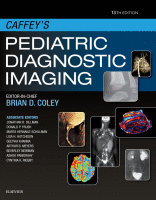Physical Address
304 North Cardinal St.
Dorchester Center, MA 02124

Pneumonia and other pulmonary infections involving the lower respiratory tract continue to be the most common cause of illness in children, affecting over 150 million children under 5 years of age each year worldwide, with 20 million related US hospitalizations…

Congenital lung anomalies represent a heterogeneous group of pulmonary developmental disorders that affect the lung parenchyma, its arterial supply, venous drainage, or a combination thereof. The reported incidence of congenital lung anomalies ranges from 30 to 42 cases per 100,000…

Overview Disorders of the lower large airways occur frequently in the pediatric population and have the potential to be life threatening. Because these disorders are often associated with nonspecific clinical symptoms, the diagnosis frequently is missed or delayed, particularly in…

The upper airway, by definition, lies above the thoracic inlet. The anomalies and abnormalities involving the upper airway in children are common and varied. They include a combination of congenital and acquired morphologic, neuromuscular, bony, and cartilaginous abnormalities. The anatomic…

With the advances in ultrasound (US) and magnetic resonance imaging (MRI), thoracic lesions are now commonly detected before birth. The most common congenital thoracic lesions include congenital diaphragmatic hernia (CDH); congenital bronchopulmonary malformations, which represent a group of lung anomalies,…

Overview Various imaging modalities—conventional radiography, fluoroscopy, ultrasound, computed tomography (CT), magnetic resonance imaging (MRI), and nuclear medicine studies—are used to assess the pediatric respiratory system. Although having abundant air in the respiratory system is beneficial when performing conventional radiography, fluoroscopy,…

Overview The respiratory system consists of conducting and gas exchange components, with the bifurcating airways and accompanying pulmonary arteries (PAs) bringing air and blood to peripheral capillary-lined airspaces for gas exchange. In understanding and evaluating pulmonary pathologic processes, it is…

The mortality rate of spine-related trauma in children is higher than in adults and is estimated at 25% to 32%. Fortunately, children with incomplete neurologic lesions fare better than adults, with up to 90% having partial recovery and 60% having…

Vascular lesions of the spine are uncommon in children. Vascular lesions are subdivided into fast-flow lesions, such as arteriovenous malformations (AVMs) and arteriovenous fistulas (AVFs), and slow-flow lesions, such as venous (formerly “cavernous”) malformations. Rarely, children suffer spinal cord infarcts.…

Spinal Neoplasms Overview. Spinal tumors occur predominantly in young or middle-aged adults and are rare in children. The most common presentation is vague pain, gait disturbance, change in spinal curvature, motor weakness, and bowel and bladder dysfunction. In this chapter,…